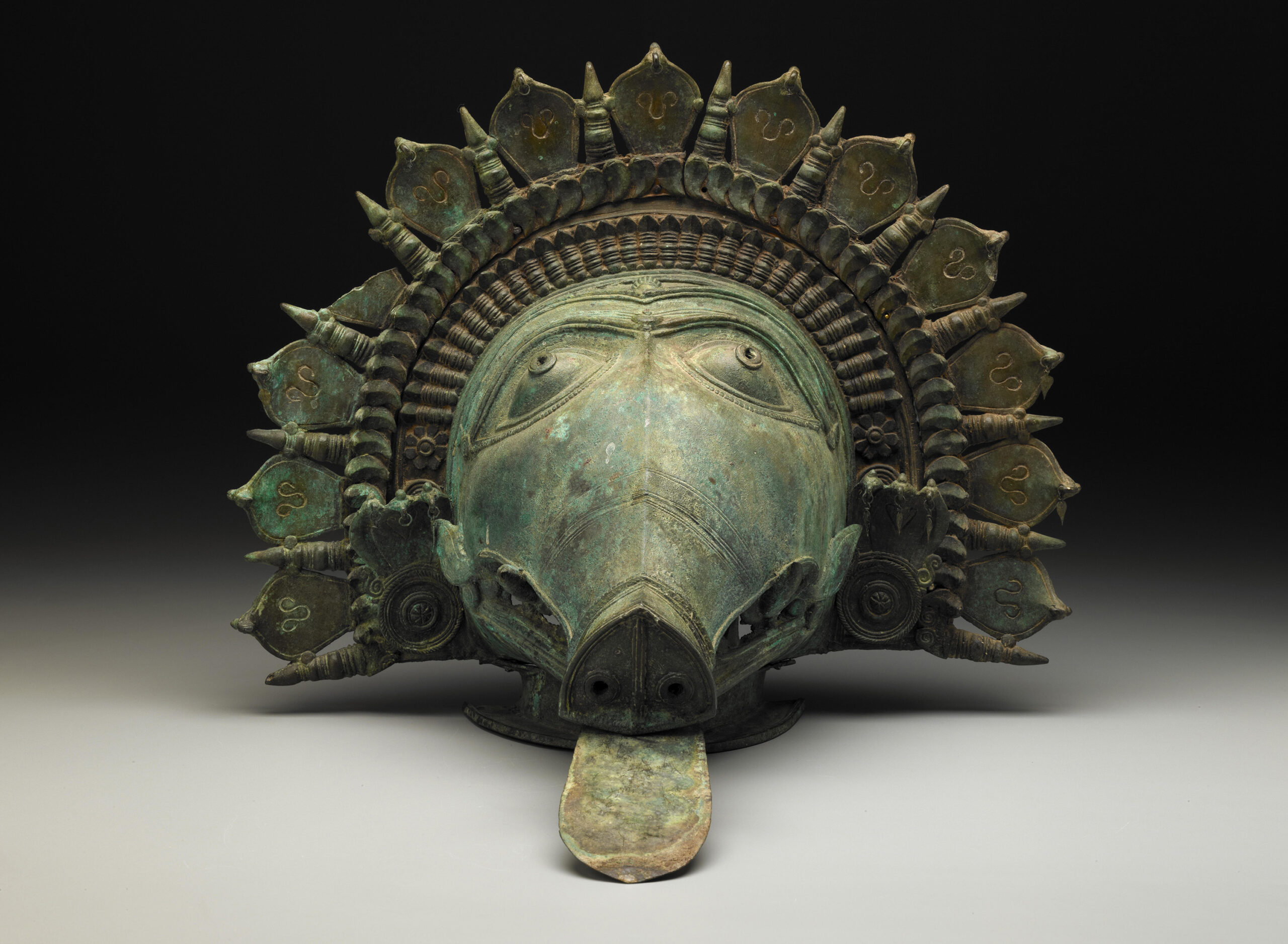ARTICLE
Bhuta Masks
Heavy, typically metal alloy-based masks worn by dancers for Bhuta Kola performances, bhuta masks are used predominantly in the coastal regions of Karnataka and in parts of Kerala, a region referred to as Tulu Nadu.
These masks are often richly decorated. The Panjurli mask, for example, features auspicious marks on the forehead and two small ornamental bands around the end of the snout. It is also provided with a crown decorated with three tiers of nagas (snakes). The first features stylised snake hoods, the second a number of small s-shaped snakes with their hoods erect. The crown is surmounted by eleven cobra hoods with engraved details, with the spaces between them filled with spear-like ornaments.
Bhuta masks are usually cast in high relief (traditionally in bronze), going up to 30 or 40 cm in height and may weigh up to 10 kilograms. Brass, wood, bell-metal, gold and silver may also be used. They are generally made using the lost wax technique. Additional details are engraved after the mask has been cast and polished.
A ceremony is usually performed on masks commissioned for ritual use at the end of the manufacturing process. The craftsman sacrifices a rooster and engraves the eyeballs of the mask, thus figuratively ‘opening’ the deity’s eyes. A sacred ablution is then performed with coconut water or palm juice. Once the ritual is completed, the mask is believed to contain the powers of the bhuta it depicts.
During a bhuta kola ritual, the dancer-performer first dons makeup, costume and various ornaments. He then puts on headgear and the ani (a halo-like structure attached to his back as a backdrop) before finally wearing the bhuta mask and wielding weapons associated with it. As the ritual progresses, the dancer is believed to be possessed by the deity and interacts with the audience.
Bhuta masks are predominantly used for rituals in Dakshina Kannada and Udupi, Karnataka and Kasargod, Kerala. Each region has their own stylistic variation. As of writing, bhuta masks are also produced as collector’s items and are available for sale in urban centres such as Udupi.
Bibliography
Our website is currently undergoing maintenance and re-design, due to which we have had to take down some of our bibliographies. While these will be re-published shortly, you can request references for specific articles by writing to hellomapacademy@map-india.org.








